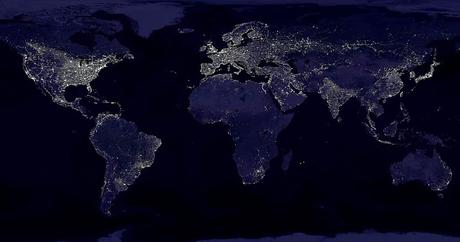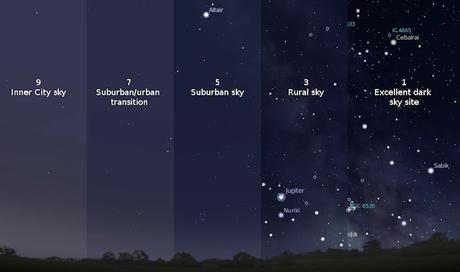
night lights on Earth (from the ISS)
Darkness is essential to our biological welfare. For centuries before the development of artificial light, human beings had become used to a day/night cycle of 12 hours of natural light and 12 hours of darkness. That cycle is a part of our circadian rhythms, an essential biological imperative which is dramatically affected by the presence of light at night.There is increasing awareness of the impact that light pollution can also have on wildlife. It interrupts natural rhythms including migration, reproduction and feeding patterns. Human-made light causes confusion to migrating birds, often with fatal outcomes.I live in a city and the view of the sky and stars is limited. I still remember being overwhelmed by the night sky when in a remote part of Finland. I’m sure that some of you will have had similar experiences. But many children will grow up never seeing the Milky Way, our own galaxy, because of the impact of artificial light.And then there is the effect that light pollution has on astronomical observations. Astronomers have long voiced concerns about increasing yet mostly unregulated artificial urban lighting and satellite mega-constellations impacting valuable observations of deep-space objects by ground-based observatories, which are considered the real workhorses of space science and are more severely impacted by light pollution than their space-based counterparts.
Bortle Scale of light pollution
Astronomically, it decreases the signal-to-noise ratio. This means that, just like a fog, the artificial light washes out and obscures faint fuzzy nebulae, galaxies, and even the stars that should be seen in the night sky. This artificial fog of light noise blocks/hides the stars that are so necessary to astronomy.There are several organizations working to reduce light pollution. One of these is the U.S.-based International Dark Sky Association (IDA), formed in 1988 to preserve the natural night sky. IDA educates the public and certifies parks and other places that have worked to reduce their light emissions. It has five types of dark sky places, which are certified according to different standards and criteria: dark sky sanctuaries; dark sky reserves; dark sky parks; dark sky communities; and urban night sky places.In the UK, there are many dark sky reserves, parks and communities which make an ideal location for a stargazing trip. Galloway Forest became the UK’s first dark sky park in 2009.The photographic map near the beginning of this article shows how Earth is affected by light in our darkness and also relates to the poem below.
A View from Above
There is a photo
taken from the Space Station,
I have it on my office wall,
it shows a night time planet
when city lights
twinkled around the globe.
We had a game
join the dots
the quickest the shortest
the most interesting way
to get from, for instance,
Nairobi to Oslo
my wife decided who won.
I remember the furore
when the crew updated it
posting Earth divided
by a broad black band
either side of the Equator
and called it The Third’s World.
My wife didn’t think it was funny.
From my ‘Notes on the Causes of The Third World War by JC Dunne’ published by Indigo Pamphlets in 2020.
Thanks for reading. Happy New Year, Terry Q.
Email ThisBlogThis!Share to TwitterShare to Facebook
